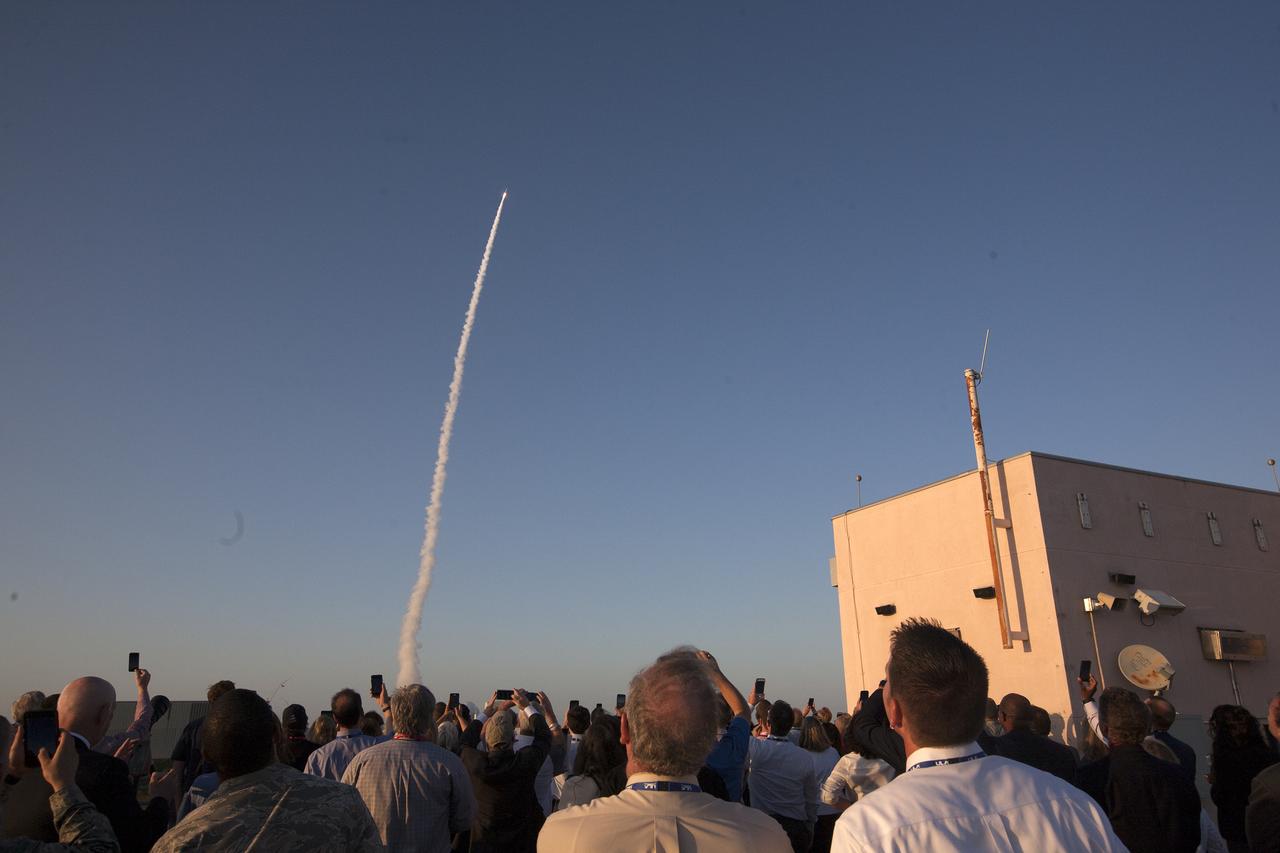Image: Liftoff of the Atlas V rocket carrying OSIRIS-REx. SCIFLI will collect data on OSIRIS-REx as it reenters Earth’s atmosphere.
Image Credit: NASA | Kim Shiflett
SCIFLI’s future is very bright. The team’s future projects will use cutting edge technology, such as the SAMI (SCIFLI Airborne Multispectral Imager) system. Currently, SCIFLI is preparing for several upcoming missions that will present new challenges and exciting questions.
One of SCIFLI’s most unique missions will be imaging the reentry of OSIRIS-REx, the Origins Spectral Interpretation Resource Identification Security – Regolith Explorer. This capsule, launched on September 8, 2016, has traveled to the near-Earth asteroid, Bennu. It will return with a sample that may give insight into how planets form, how life began, and the landscape of near-Earth asteroids. SCIFLI will document its return from deep space, an especially important task as its reentry will be hot and quick. Using spectral imaging techniques, the team will collect data on the plasma environment surrounding the capsule during reentry. Much like the 2020 Hayabusa 2 mission, SCIFLI will be collaborating with international partners, including JAXA and the University of Southern Queensland.

The team will also be documenting commercial vehicles. Sierra Space’s shuttle-like Dream Chaser and SpaceX’s Starship will begin their extra-terrestrial journeys by visiting the ISS and low Earth orbit, respectively. SCIFLI will document these to help ensure their safety and space-readiness before they progress to crewed missions. Harkening back to its HYTHIRM history of shuttle documentation, SCIFLI will take calibrated thermal imagery of both vehicles. This will help analyze how each craft interacts with the Earth’s atmosphere at high speeds from a fluid dynamics perspective. While this is often tested prior to flight using models of the crafts in high-Mach wind tunnels, SCIFLI’s images provide direct observational data of the craft while it is in flight. This will be particularly essential for Starship, which plans to travel to Mars, far beyond Earth’s orbit. SCIFLI’s observations will help to ensure Starship is fully prepared for these deep space missions.

